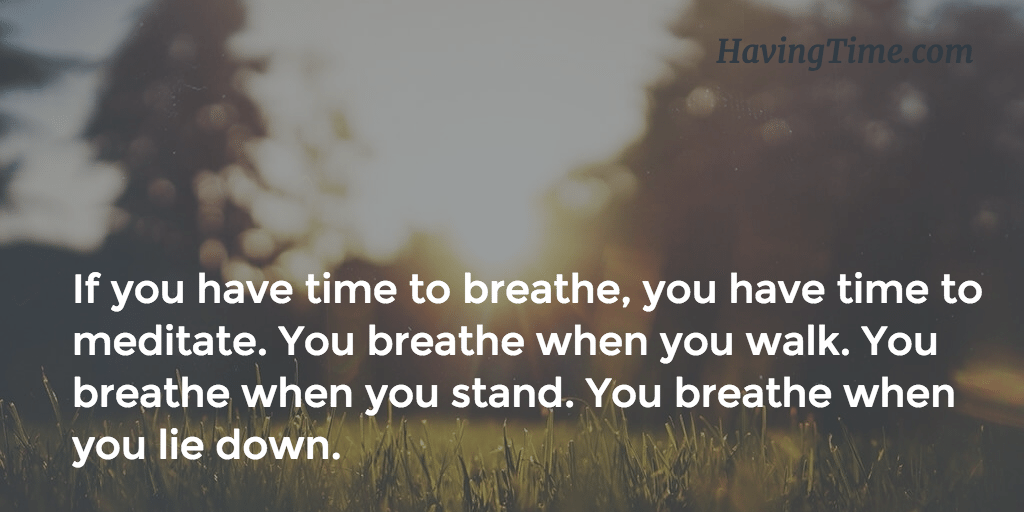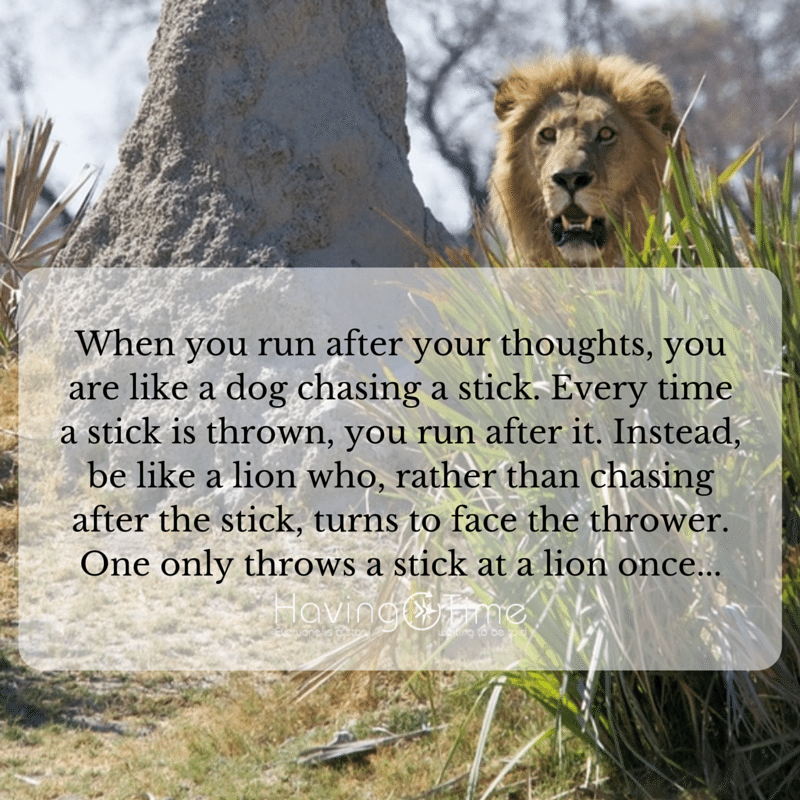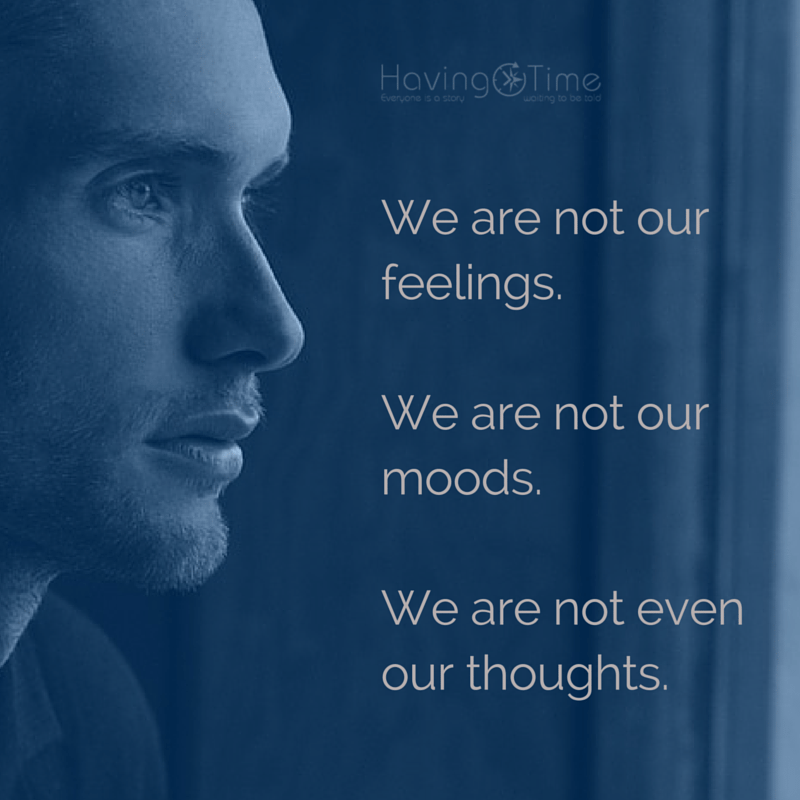
Between stimulus and response, there is a space. In that space is our power to choose our response. In our response lies our growth and our freedom. – Viktor E. Frankl
Modern life can feel overwhelming at times, whether you’re racing to work with a cup of coffee and a bagel, taking the kids to school, always checking your email or not being able to put down the tablet for the next social media hit. With life moving so quickly it can feel like there is no time to rest. We can be left with a busy, frustrated mind, never actually taking time out for ourselves.
Imagine being able to calm your mind on demand. It’s chaos at work; the team is having a meltdown as you have just found out one of your investors has bailed on you. You feel a strong pull to join in the panic; the team is frustrated and turning on each other. What do you do?
With an alert awareness, you witness the situation, you don’t get caught up in it, and you decide to calm your mind. Like flicking a light switch, you calm your mind on demand. The frustration eases, the stress fades, and you come across a sense of clarity. You then gather your team back together and set about turning things around. Now that’s a leader I want to work for! This is the ‘space’ Frankl famously spoke about.
You want to follow your dreams, but a high sense of fear keeps arising when taking that first step?
You want to follow your dreams, but a great sense of fear keeps occurring when taking that first step. Imagine being able to calm the mind, simmer the fear and follow your dreams and give the world your gift.
The great news is this isn’t some fantasy or imaginary skill that’s only left for the enlightened club or the Stoics of the past. It’s here available for you now, and it starts with training your mind.
As we all have busy lives, it may be inconceivable to even think of taking time out. It’s the classic, “I don’t have time for that, I’m so busy!”. You may have experienced this yourself, always searching for that day when freedom will come down and give you its’ blessing. That was me around five years ago. I would have turned around and said to you: “No way! I don’t have time; I’m too busy!”. The reality I had a lack of priority and I also never stopped. That left me exhausted, stressed and burnt out. Even though I felt I was still achieving the goals I set, I took no time to appreciate the present.
What if we looked at taking time every day to give our minds the space Victor Frankl mentioned? What if we viewed creating some head space in the same way as brushing our teeth?
If we take that step, we can be less reactive, less stressed, more balanced, happier and have more success. Yes, more success! Sometimes we can fill our time with feeling like we are busy, rather than using the time to be more productive.
So how can we access that space Frankl so famously spoke about? The first step is training the mind.
One of the most effective ways of training the mind is meditation. By only taking ten minutes out of your day to sit and train your mind you can massively impact your life and the people around you.
How to Calm The Mind When You Need Peace
For more information on how to start a meditation practice click this link here to view my article about the benefits of meditation and how to start training the mind.
Freedom: stepping out of the storyline and taking ownership of your life
Do you have a storyline that states, ‘I am an anxious person,’ ‘I am an angry person,’ ‘I am a lazy person’; ‘Life is not fair, why is this happening to me?’ Or, in this case, ‘I don’t have time to sit.’ The great news is that by accessing the present more often, we begin to disassociate with the negative storyline. You start to realize that the same old story is keeping you from following your dreams. With the further training of the mind, you can step out of the story and follow your dreams.

Mindfulness and neuroplasticity: training the art of awareness and seeing that the brain is not completely fixed
Scientists have found that the brain is more dynamic than we thought. That goes against the old idea that the brain is a static organ. With new technology in FMRI, scientists have found that our brains are more plastic and changeable than we thought. It’s called ‘neuroplasticity‘: the brain’s ability to recognize itself both physically and mentally.
With training in mindfulness, the brain can become extremely resilient and help you recover from serious injuries such as strokes, health conditions such as ADHD and even help pull you out of depression. It is the training in our awareness that determines which brain networks are strengthened and which are weakened and lost.
Therefore, the more we worry, the better we become at worrying. The same applies to the other side of the coin. If we practice being calm, clear and focused, we can strengthen these networks too. With a more settled mind, our nervous system can take in more information, allowing more access to creativity and flexible, lateral thinking, helping us deal with challenges more efficiently.
“The Mind In Its Natural State is Joyful” – Chade Meng Tan – Head of SIYS – Google
We still feel the stress or sadness, but we can return to a stable state a lot quicker. This is crucial for making high-end decisions, working with a team, starting and running a business and so on.
See these key scientific studies on neuroplasticity and how the brain becomes thicker in particular areas frequently accessed. They show that long-term meditation results in a larger hippocampal and frontal volumes of grey matter – amazing!
Training the Mind
One of the key factors of meditation is the ability to deal with our thoughts and feelings more productively, focusing the mind on the present and stepping out of thought.
We can view training the mind like training at the gym. The example we will look at is the bicep curl. The more times we practice a bicep curl, the stronger our bicep will become. Once we get into the habit of doing bicep curls, we can then add more weight, which allows the bicep to become even stronger. We can use this analogy to the mind: we don’t just jump into the gym and put the heaviest weights on, same as we don’t expect to meditate for hours if we can’t focus on one breath. But with time, as we get used to the weight we are lifting, we can also steady the mind for longer periods of time.

Finding the Balance
In meditation, we want a very gentle awareness and an alert focus. One way to look at this is using the ‘horse in the field’ analogy. Let’s say you have a wild horse on some rope, but the horse is in a contained environment. You allow the horse to roam freely, then slowly you bring the horse back to you. This is a great analogy for the mind and can be used in meditation by keeping a light, soft awareness. You can then allow the mind, over time, the freedom to roam. When the mind wanders, you can lightly note it. The key point here is to hold a very light awareness.
Once we settle the mind, we then have a better chance at focusing it on a sensation like the breath or inside the body. The breath is a great one to start with as it’s nice and easy to focus on. The more you get used to this, the more you can then turn up the heat on the focus.
The ability to calm the mind under stress is your ticket to freedom
The beauty of this exercise is that, with consistency, we begin to develop the same state of mind in our day-to-day lives. This means when we are under high stress we can calm the mind on demand. This is of the most powerful tools to discover in your life. Whether at work or in your personal life, being able to calm the mind on demand is your key to freedom.

5 Health Benefits Meditation Can Inject Into Your Life
- Meditation helps you with your stress levels and improves your focus and attention
- Meditation can lessen worry, anxiety, and impulsivity diminishing fear and loneliness
- Meditation develops empathy and positive relationships. It also helps reduce social isolation
- Greater information processing and decision making
- Increases positive emotion
Tips to get you started
- The great thing about meditation is it can be done anywhere! We recommend you start somewhere that has a little noise and a comfortable chair to sit on. You can also sit on the floor or at the end of your bed
- Try taking 10 minutes to start with, if 10 minutes feel too long start with 5
- Set a reminder or couple it with something you do every day, this could be just after you shower, or your workout routine.

Tips for once your set to go
- Remember with meditation we are training in awareness, so don’t expect the mind to stop, the whole idea is to be able to see the mind clearly. Also, don’t worry if you feel that there is a lot of thoughts, this is perfectly normal, the mind will calm over time
- Finding the balance is key with meditation, so once you are comfortable, the idea is to have a very soft/light awareness with an alert concentration. So simply put you can maintain awareness very lightly on thoughts and feelings and increase your focus on an object of your choice. This can be your breath, the body, the sense of the body on the chair and so on. Our advice is, to begin with, a light awareness first, then move to increasing focus on your chosen object.
- Viewing the traffic – we can view our thoughts and feelings like cars on the road, we just see the cars pass and let them go, ah there’s anger, or there’s joy, etc. At times we may run onto the road, running into our thoughts, not to worry, once we realize this we can gently bring our attention back to the breath or body.
Final Thoughts
Remember, we are training the mind here so that it will take time, and you will get there. Remember Rome wasn’t built in a day so be patient with yourself, and I can assure the benefits of meditation are incredible. It’s your ticket to freedom and greatness. As Victor Frankl famously said, it’s the space between stimulus and response that gives you freedom and as you practice meditation more and more that space becomes clearer and clearer.
Take the first step today and Step into your greatness!


